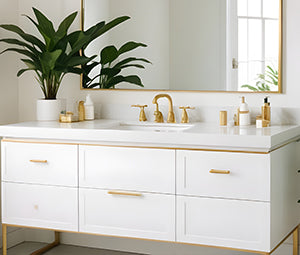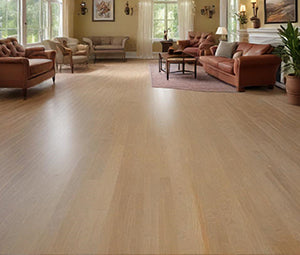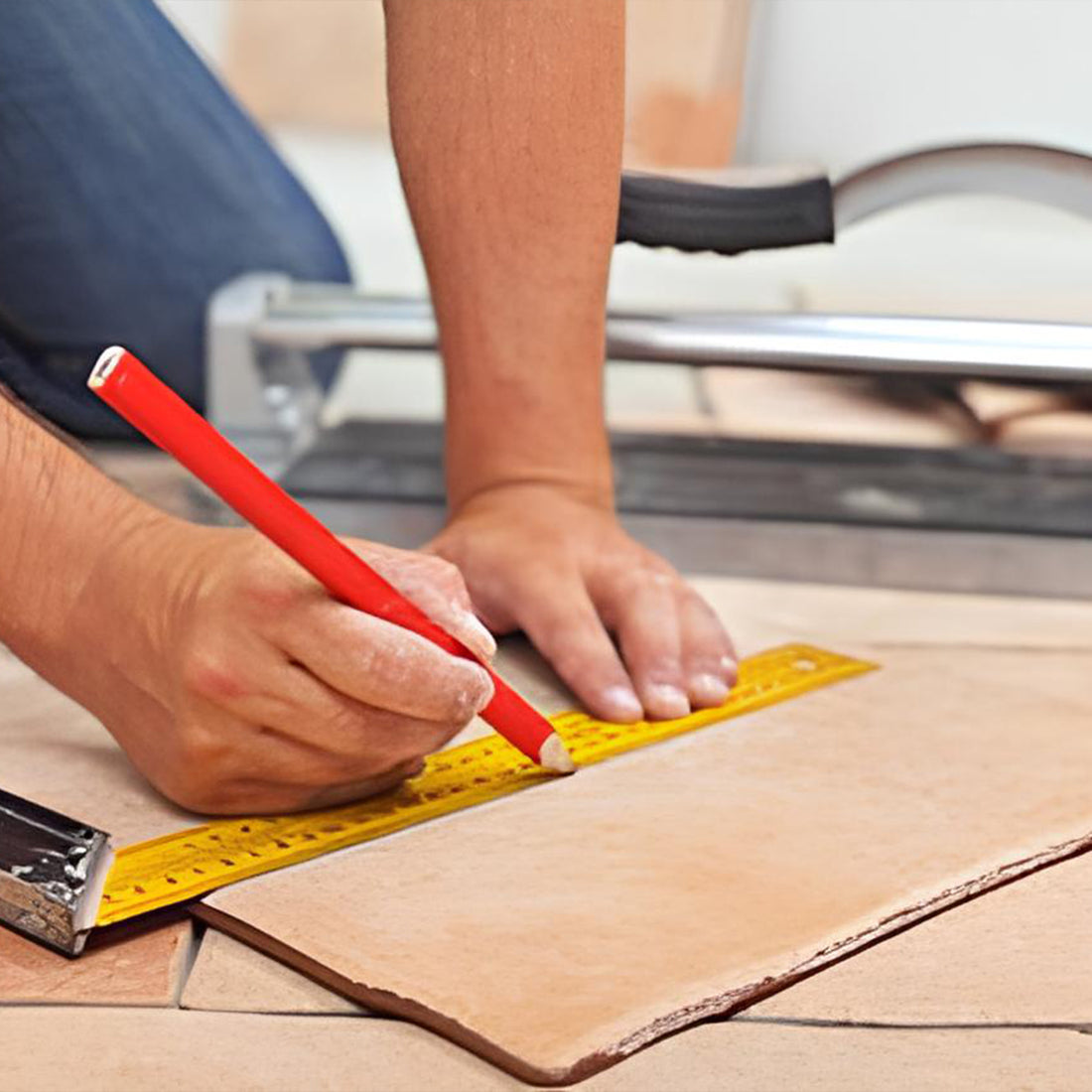How To Decide How Much Tile Your Floor Needs
Are you thinking about retiling your kitchen floor? Or do you want to spruce up your master bathroom? Whatever you're planning on tiling, there are a few things you need to do before you can install your new floors.
The first step of every tiling job is determining the number of tiles you need. To do this, you'll need to do some measuring and math. So grab your trusty measuring tape and open the calculator app on your phone!
Once you have your tools ready, all you need to do is follow this guide on how to decide how much tile your floor needs. We'll run you through the measuring process so that you can start your tiling journey off on the right foot.
Take Measurements
To start, you'll need to measure the room where you plan to install tiles. Grab your tape measure and follow these instructions for measuring rooms of various shapes.
For Square or Rectangular Rooms
If your room is square or rectangular, measuring is simple. Start by measuring the room's length and width. If the measurements aren't a round number, you'll need to convert the additional inches into feet. To do this, divide the number of inches by 12. Add the resulting decimal to the number of feet. Finally, multiply the length and width to get the room's measurement in square feet. If your total is a decimal, round up to the nearest foot.
For Circular Rooms
Now things get a bit tricky. Unless you're a math whiz, you'll want to break out a calculator for this task. For a circular room, you'll want to measure the diameter. Then, take the radius, square it, and multiply it by pi (3.14) to calculate the area. You can also use this method to calculate the area of polygonal rooms. You'll end up with a few surplus tiles using this method, but it's arguably the most effective way to measure the area of these peculiar shapes.
For Irregularly-Shaped Rooms
If you have an oddly shaped room, you'll need to break it into multiple shapes and measure them separately. For example, if you have an L-shaped room, you can separate it into two rectangles. Measure the length and width of each rectangle using the instructions for square and rectangular rooms above. Once you have the measurements for both shapes, multiply the length and width of each rectangle. Add the two resulting numbers to get the area.
For a Border Wall
Do you want to create a tile border to match your tile floors? You can calculate the amount of tile you need by measuring the perimeter of the room and dividing it by 12. This will give you the total linear feet of tile needed to create a border.
Doesn't the Tile Size Matter?
Nope! You don't need to account for tile size when measuring your room. All that's important is determining the square footage. However, tile size does play a crucial role in your next step.
How Many Tiles?
Now that you have the area of your room, it's time to determine how many tiles you need to fill it. Depending on whether you're purchasing tile boxes or individual tiles, the best way to calculate this number varies. Learn how to determine the correct tile number below.
Tile Boxes
If you're purchasing tiles in a physical store, you’ll likely choose boxes of tiles over individual ones out of convenience. First thing's first—you need to find a tile you like. Once you select your tile, you should be able to find the total coverage in square feet on the box. Most boxes contain 10 square feet of tile, but this can vary. Divide the area of your room by the square footage provided by each box to calculate how many boxes you need. If you get a decimal, round up to the next number.
Individual Tiles
If you're buying individual tiles, look for the size of the tile on the packaging or in the product description. Multiply the width and length of the tile to find the area it will cover; then, divide by 144 to convert the measurement to square feet. Next, divide the area of the room by the square footage of a single tile. This will tell you how many individual tiles you need to purchase.
Round Up
When it comes to tiling a room, it's better to overestimate the number of tiles you need than to underestimate. As a precaution, you should assume that 10% to 15% of your tile will go to waste. They might arrive broken or discolored or be broken during installation. Buying 10% to 15% extra is essential if you want to ensure you’ll have enough tile to cover the floor.
These extra tiles will come in handy in the event something unanticipated occurs. And there's a lot that can go wrong with tile installation! Your tiles could arrive broken, or you could accidentally drop one when unboxing. Tiles can also come loose after installation. You may also need extra tiles to break into fragments for areas where a full tile won't fit.
Additionally, having extra tile is useful in case the tile you choose is discontinued or raises in price over the next few months or years. If you buy extra, you can save yourself the frustration and heavy expenses that come with needing to replace tiles in the future.
Now that you know how to decide how much tile your floor needs, you can tackle your renovation with confidence. Measure your room, choose your favorite tile design, and transform your room with a quick and easy installation. As long as you measure your room accurately and account for overage, you'll be fine.
Still looking for the perfect tiles for your renovation? Surplus Building Materials has incredible wood-like tiles for sale. If you want hardwood floors without the maintenance and cost of real hardwood, these durable and convincing tiles are a fantastic alternative. They're as strong, moisture-resistant, and inexpensive as porcelain tile and accurately mimic the appearance of hardwood. Shop with us today for wood look tile that mimicks various types, colors, and grains of wood!









